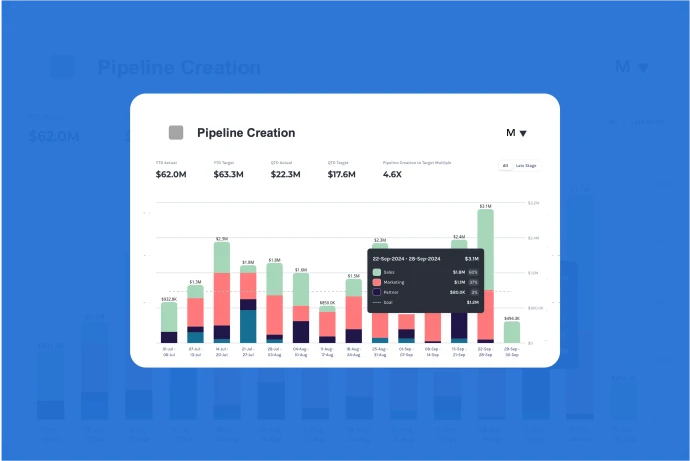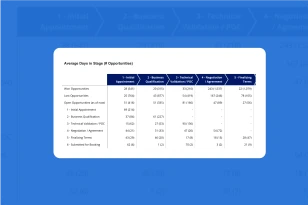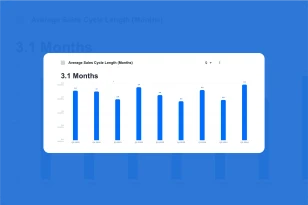What is Pipeline Creation?
Pipeline Creation measures how many new sales opportunities are being added to your sales pipeline over a specific period of time. It tracks the initial stages of the sales process, when leads or prospects are identified and qualified as potential customers.
This metric is important because it shows the health and future potential of your sales efforts. A strong pipeline means there are plenty of opportunities for your team to work on, which can lead to future sales. It also helps sales teams predict future revenue by showing how many deals they might close down the line. In short, pipeline creation helps you understand whether your team is consistently generating new business opportunities.
Why is Pipeline Creation important?
Pipeline Creation is a vital metric for several reasons:
- Sales Growth: A healthy pipeline is essential for sustained sales growth. A consistent influx of new opportunities ensures that the sales team has a sufficient pool of prospects to engage with.
- Revenue Predictability: Monitoring this metric allows the company to predict future revenue based on the number of opportunities in the pipeline. A robust pipeline provides greater revenue predictability.
- Resource Allocation: It assists in making informed decisions about resource allocation for lead generation efforts. An efficient pipeline creation process ensures that resources are invested in activities that yield results.
How do you calculate Pipeline Creation?
Pipeline Creation = Value of New Opportunities Created over a period of time
How do you Improve Pipeline Creation?
Enhancing Pipeline Creation involves optimizing lead generation efforts to continually add new opportunities to the pipeline. Here are some strategies to improve this metric:
- Lead Generation Strategies: Invest in various lead generation strategies, such as content marketing, SEO, social media marketing, email marketing, and paid advertising, to attract a steady stream of potential customers.
- Lead Qualification: Implement an efficient lead qualification process to ensure that only high-quality leads enter the pipeline. Focus on leads that align with your ideal customer profile.
- Marketing-Sales Alignment: Foster alignment between marketing and sales teams to ensure that marketing efforts are designed to generate leads that are more likely to convert.
- Data Analytics: Use data analytics and lead tracking tools to identify which lead generation channels are most effective. Focus resources on the channels that yield the best results.
- Content Optimization: Create high-quality, informative, and engaging content that addresses the pain points of your target audience. Quality content attracts and retains leads.
- Feedback and Iteration: Regularly seek feedback from the sales team to understand the quality of leads and whether they meet their expectations. Use this feedback to iterate and improve lead generation strategies.





